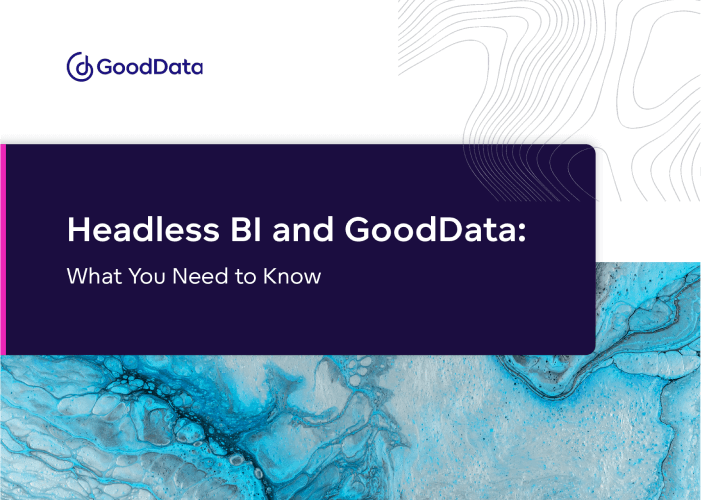Headless BI was born to solve an emerging problem in the data stack: metric inconsistency. This inconsistency arises because users choose to use various data tools in their day-to-day work. After all, different use cases require different capabilities from tools. But because each tool needs to have its own metrics written in its proprietary query language (DAX, LookML, VizQL, and so on) to analyze data, the same metric — e.g., Revenue — can easily be defined differently across the tools. Thus, depending on the tool used, different people, teams, and departments will yield inconsistent results because their metric definitions are not the same as others.
So what does this have to do with GoodData? Since recognizing the need for headless BI, GoodData has worked tirelessly to create its Headless BI feature. We’re going to walk you through:
- What headless BI is and how it addresses the problem of inconsistent metrics
- How GoodData implements headless BI
- How GoodData differs from other solutions offering headless BI
How does GoodData define headless BI?
Headless BI is an analytical backend that makes metric definitions accessible via declarative APIs, SDKs, and standard protocols. In the headless BI architecture, the backend and the presentation layer are decoupled, or function separately, so metrics defined in the backend can be consumed by any number of different heads — data tools, ML models, and applications. Thus, all the data consumers in your organization — employees, customers, and partners — can access one source of metrics and work with the same consistent definitions regardless of what frontend they use.
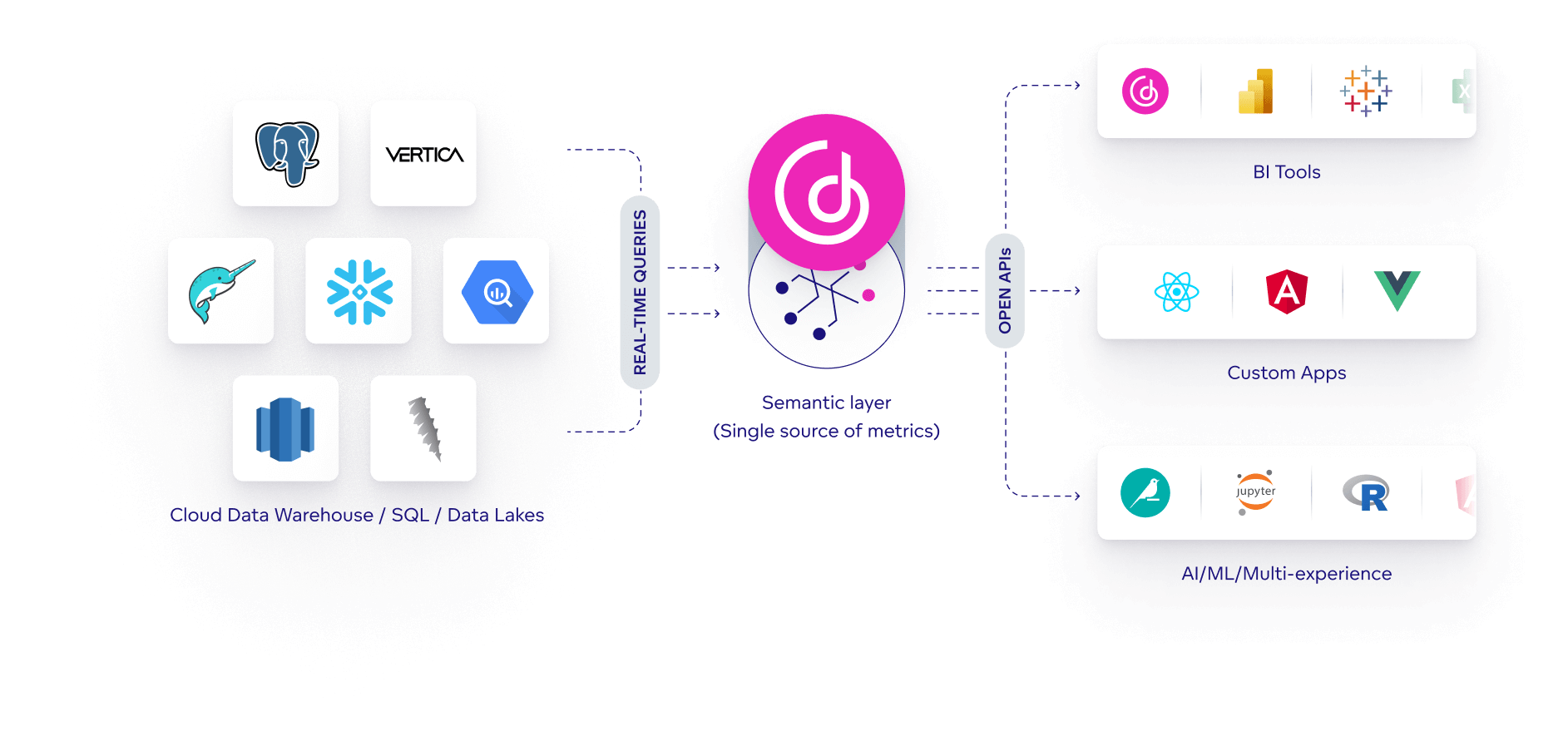
How does GoodData implement headless BI?
GoodData’s API-first platform enables headless BI through a universal semantic layer, reusable metrics, and open consumption via APIs and SDKs. Each step plays an important role when you want to make metric definitions consistent and available for third-party interfaces.
Universal Semantic Layer
GoodData’s universal semantic layer is a centralized and governed place to standardize your analytics for all end users and downstream applications. It transforms complex data into easy-to-understand, reusable semantic definitions, such as “product,” “customer,” or “revenue.” These simplified definitions allow business users to interact with data autonomously without in-depth knowledge of the underlying data structures. The semantic layer also abstracts analytics from changes in the backend infrastructure. Changing the underlying physical data, the source data structure, or data warehouse will not break the semantics used by your end users and downstream applications. Thus, the semantic layer not only unifies your analytics but it gives data and analytics engineers the much-needed resiliency against any upcoming technological changes — making your analytics future-proof.
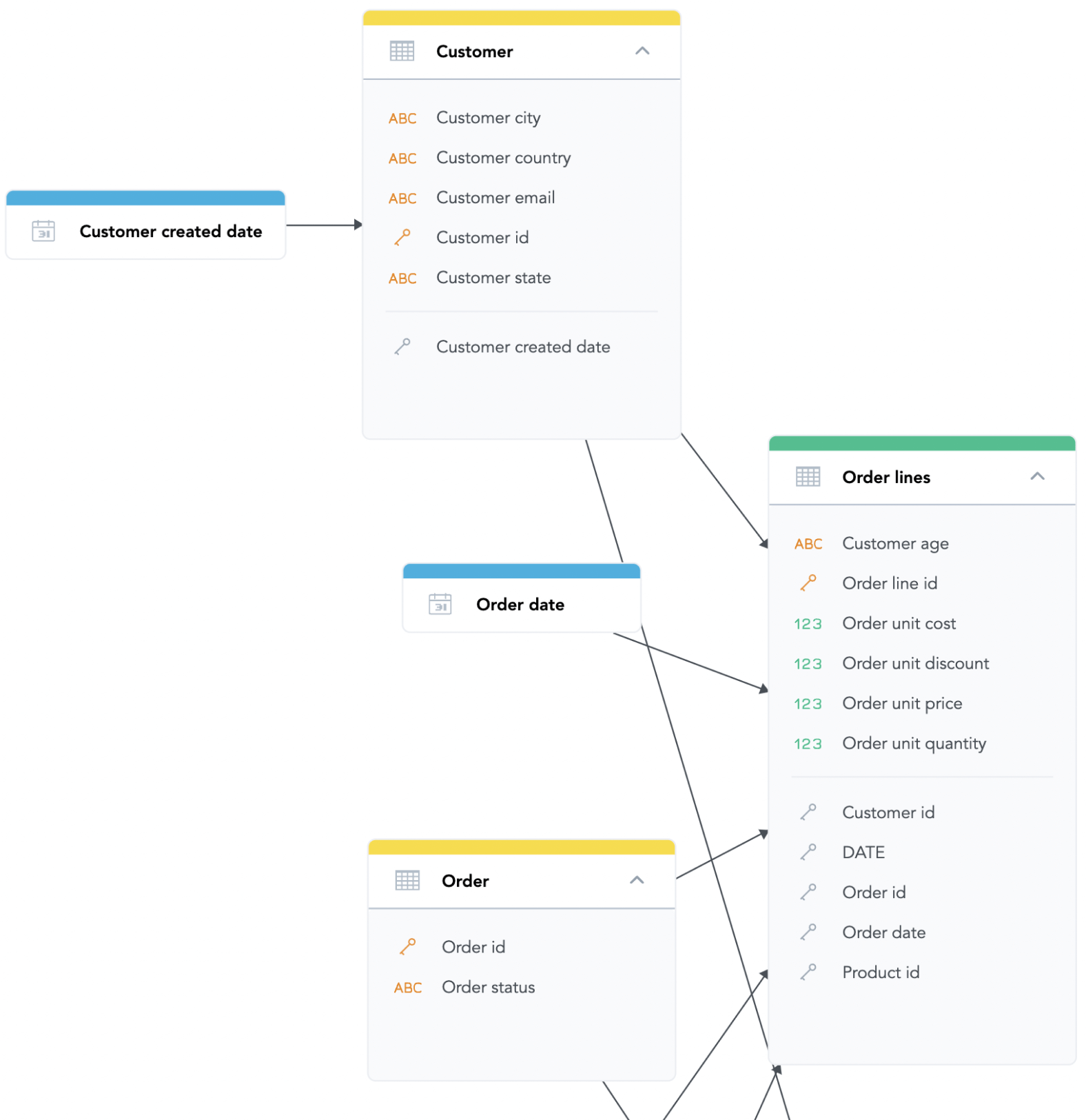
Reusable Metrics
The universal semantic layer allows you to build reusable metrics along with reusable semantic definitions. Unlike queries, GoodData’s metrics can be reused in coordination with other metrics and different contexts. GoodData’s analytical query engine takes care of joins, sub-joins, and GROUP BYs, translates all metrics into core algebraic operations arranged in a hierarchical query tree, and automatically generates its own SQL queries in real time — you don’t need to write thousands of SQL queries. Instead, you can compose all metrics from a few baseline components directly in the GUI or via APIs. Any changes made to metrics will automatically be applied to every metric composition, dashboard, and application — ensuring consistent results across your enterprise.
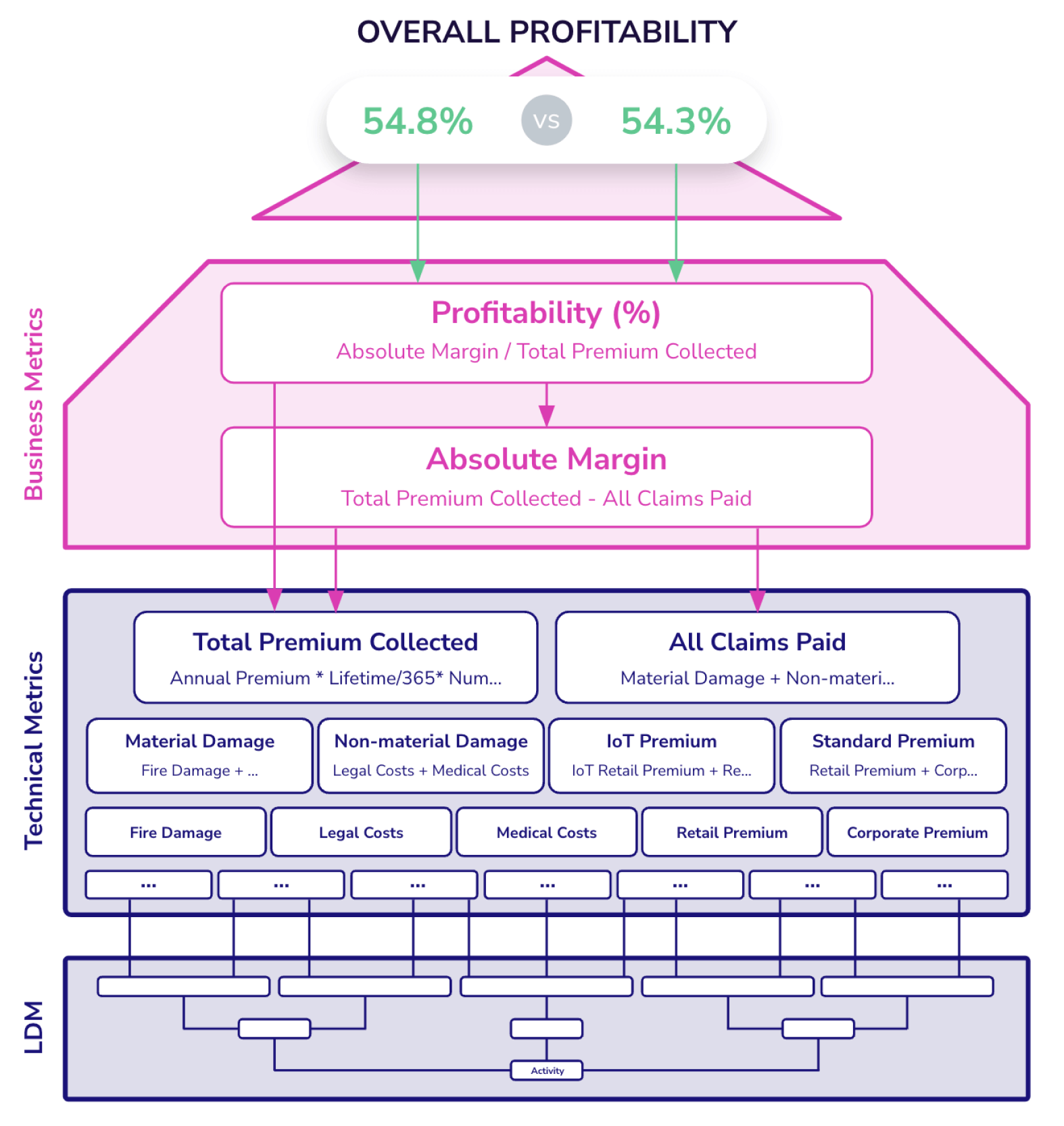
APIs and SDKs
The universal semantic layer with facts, attributes, and reusable metrics is accessible for third-party tools and interfaces via APIs and SDKs. Thus, internal and external data analysts, data engineers, and business users can use their favorite business intelligence (BI) platforms, ML/AI notebooks, and data applications to analyze, create recommendations, and take action on top of consistent, standardized metrics.
The platform’s API-first approach and 100% open API coverage means that all of GoodData’s functions can be performed via well-designed open APIs with declarative definitions — everything you build and configure is both human- and machine-readable. And with GoodData’s open-source SDKs (Python, JS, and React), developers can interact and consume metrics programmatically.
How does GoodData differ from other headless BI solutions?
GoodData strives to help companies build modern, scalable, and consistent analytics for their end users, customers, and data consumers. Whereas other headless BI solutions concentrate on solving the metric inconsistency problem by serving as a metrics layer between your data warehouse and downstream applications, GoodData’s API-first platform goes beyond headless BI. GoodData not only standardizes the metrics definitions for external applications and interfaces but it also offers multi-tenant architecture, its own UI with self-service analytics capabilities, and tools to rapidly build interactive data applications using modern software development best practices.
Analytics Development
GoodData enables development teams to manage the analytics as code. Developers can import and export the metadata of all analytical objects in the platform in declarative format and use their favorite IDEs for the development. And with open APIs, developers can integrate analytics development into their CI/CD processes and automate every stage of the development — creation, testing, and provisioning. Thus, analytics can be deployed faster, with higher quality and lower error rates, just like developers do with any other software code. By doing so, you can scale our analytics like modern applications, and ensure that you deliver data into people’s hands faster, more reliably, and more agilely so they can use it for what it is intended for — to make better decisions.
Multi-tenant, Self-service Analytics
The platform provides built-in multitenancy so you can create a self-service analytics environment for each team member, department, and customer. The multi-tenant environment allows you to share the same semantic layer, metrics, visualizations, and dashboards (the so-called “analytical model”) among multiple consumers while keeping their data private (each consumer can access only their own data). Data analysts and business users of each tenant can then use GoodData’s drag-and-drop self-service tools to create interactive visualizations and dashboards while data scientists can use their notebooks to develop ML models on top of the same data.
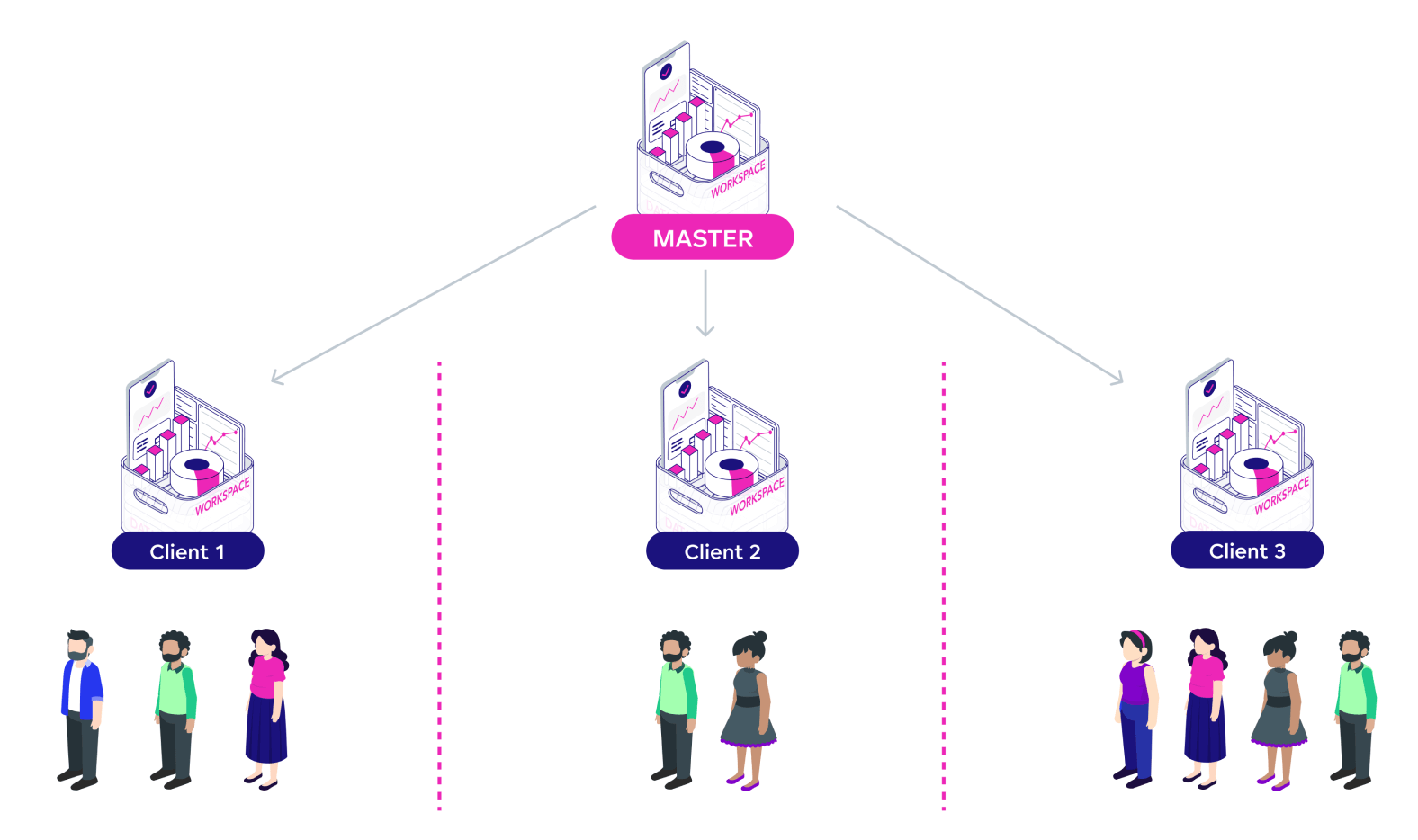
Data Application Creation
Developers can build interactive data applications using GoodData.UI Typescript framework with react components and boilerplate. All the visualizations and dashboards created in the platform can be natively integrated into the app. Or, if your use case requires custom visualization types not supported by GoodData out of the box, developers can utilize any third-party visualization library (e.g., d3.js or Highcharts). The entire development can be done without knowledge of the underlying data structures or joins so developers can spend their time on what they know the best — coding — instead of thinking about how to create and calculate the correct metrics.
Learn more about GoodData
GoodData’s API-first analytics platform enables you to build analytics solutions like any other software and provide consistent metrics to all end users and data tools. To learn more about headless BI, GoodData, or how we can help you with your analytics use cases, you can try GoodData’s fully managed, API-first analytics platform for free or schedule a commitment-free demo with a GoodData specialist.
Continue Reading This Article
Enjoy this article as well as all of our content.
Does GoodData look like the better fit?
Get a demo now and see for yourself. It’s commitment-free.
